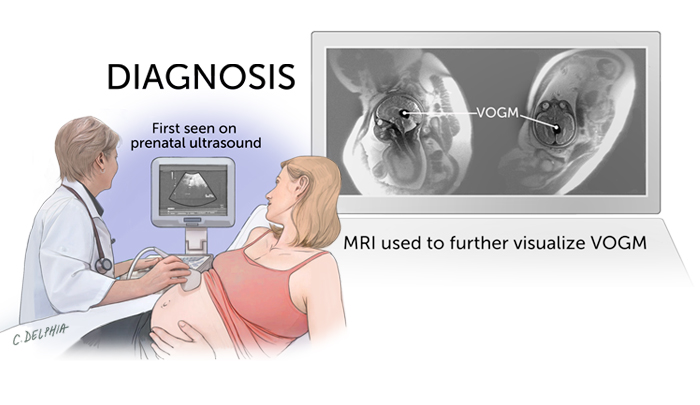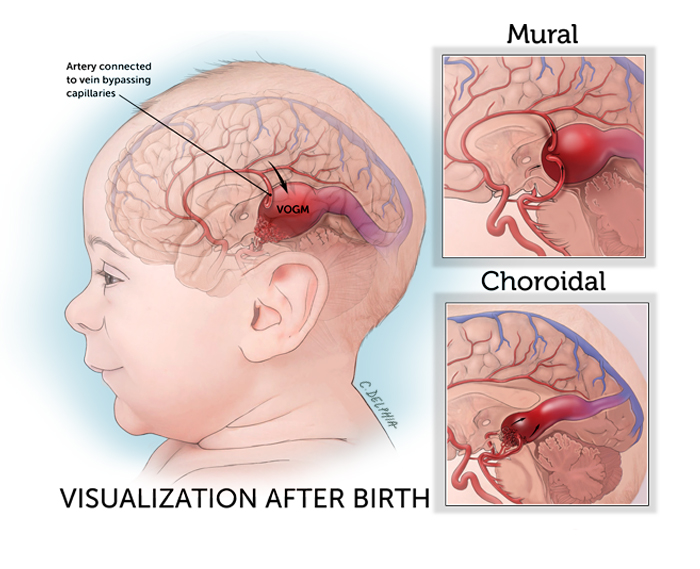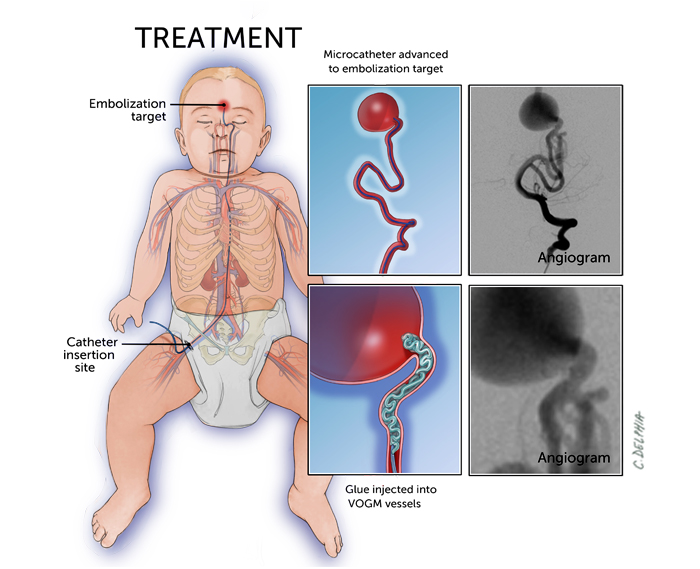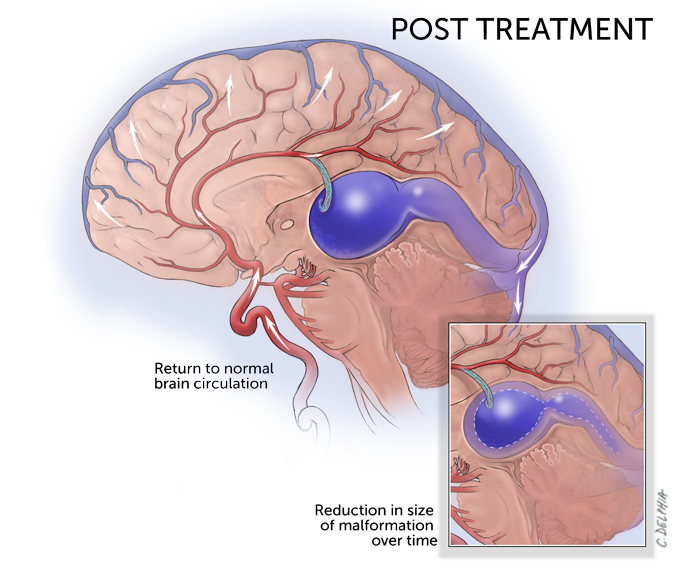Vein of Galen | Symptoms & Causes
What are the symptoms of vein of Galen malformation?
Symptoms of a VOGM usually begin shortly after birth or during early childhood.
Common symptoms may include:
- heart failure, often within the first day or two of life
- hydrocephalus
- unusually prominent veins on the face and scalp
- developmental delays
- persistent headache
- in very rare cases, a bleed in the brain
What are the causes of vein of Galen malformation?
A VOGM occurs during a baby’s early prenatal development, usually during the first trimester. It is not known exactly what causes a VOGM, but it is likely genetic.
A VOGM sometimes, but not always, occurs with vascular anomalies that affect other parts of the body. They generally are not inherited.
Vein of Galen | Diagnosis & Treatments
How is vein of Galen malformation diagnosed?
VOGM is often noticed on a prenatal ultrasound late in pregnancy, and in other cases it's diagnosed after birth.
The main imaging technique used to diagnose vein of Galen malformations is magnetic resonance imaging (MRI).
Other tests may include:
- CT angiography (CTA), which uses the technology of a computed tomography (CT) scan along with an injected dye to generates images of the blood vessels of the upper chest, neck, and brain
- magnetic resonance angiography (MRA), which uses magnetic resonance imaging (MRI) technology to evaluate blood vessels in the brain, head, and neck


What are the treatments for vein of Galen malformation?
The goal of treating a VOGM is to eliminate or decrease as much of the blood flow through the VOGM as possible, while maximizing the blood supply to the brain.
The most common treatment is endovascular embolization, a minimally invasive procedure. For this procedure, the neurosurgeon inserts a catheter (a thin, flexible tube) into an artery in the child’s groin through a tiny incision. The surgeon guides the catheter up into the brain and injects a special material (such as a type of glue or soft metal coils) into the blood vessels of the VOGM to close off the blood flow.
Most children have no pain or other symptoms with embolization, and most are able to leave the hospital within a few days. Some children will need to spend several days in the ICU for observation.


How we care for vein of Galen malformation
The Boston Children’s Hospital Cerebrovascular Surgery and Interventions Center is one of the few pediatric centers in the world that specializes in treating VOGMs.
We bring together an unusually large number of specialties to care for your child, matched by few other hospitals. They include pediatric specialists in vascular anomalies, neonatal intensive care, cardiology, neurology, neuroanesthesiology, neurointerventional radiology, and neurosurgery, as well as staff in our Medical-Surgical Intensive Care Unit, whose expertise is critical in ensuring the best outcomes.
Our physicians attend weekly conferences with the Vascular Anomalies Center at Boston Children’s. Through active research, we are constantly exploring methods to make a more precise diagnosis of VOGM and seeking new treatments.
Fetal intervention for vein of Galen malformations
Boston Children’s Cerebrovascular Surgery and Interventions Center is conducting a clinical trial on fetal intervention for vein of Galen malformation, along with specialists from Boston Children’s Maternal Fetal Care Center and the Brigham and Women’s Hospital Maternal-Fetal Medicine Group. Visit our study page to learn more.
Watch: Meet our patients



